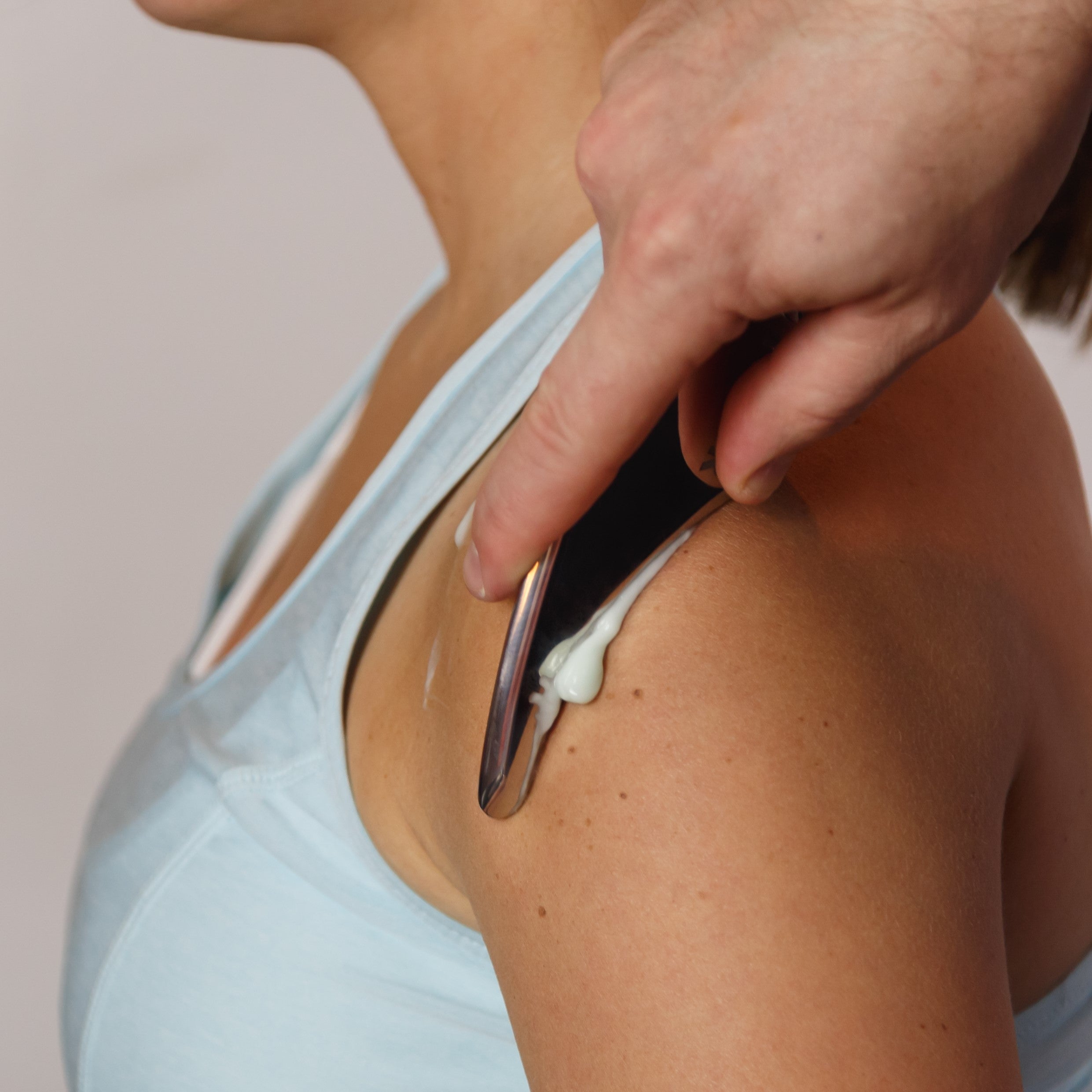Instrument-Assisted Soft Tissue Mobilization (IASTM) is a manual therapy technique that has gained popularity in recent years. This blog post will introduce you to IASTM, explain how it works, and explore the various IASTM tools.
What is IASTM?
IASTM is a form of manual therapy that uses specially designed tools to manipulate and mobilize soft tissues (muscles, tendons, ligaments, and fascia). This approach enhances a practitioner's ability to detect and treat soft tissue dysfunctions effectively.
How IASTM Works
IASTM uses specially designed tools to help therapists treat soft tissue problems more effectively. Here's a simple breakdown of how it works:
- Finding problem areas: The IASTM tools help therapists feel for tight or knotted areas in your muscles and other soft tissues.
- Improving blood flow: By applying controlled pressure with the tools, therapists can increase blood flow to the treated area. This helps your body start its natural healing process.
- Breaking down restrictions: The treatment can help break up scar tissue and loosen tight areas in your muscles and connective tissues. This can lead to better flexibility and less pain.
- Enhancing the therapist's abilities: The tools allow therapists to apply deeper pressure more comfortably than they could with just their hands. This means they can treat your tissues more effectively without straining themselves.
IASTM Tools
IASTM tools come in various shapes and sizes, each designed to address specific treatment needs. Practitioners select tools based on the treatment requirements and their personal preferences. Here's a look at some common IASTM tool types:
- Edge tools: These versatile instruments feature multiple edges for different treatment applications. Their design allows practitioners to adapt to various tissue types and body contours easily.
- Knob tools: With their rounded surfaces, knob tools are perfect for broader pressure application. They excel at gentle mobilization of larger muscle groups, making them ideal for treating areas like the back or thighs.
- Cone tools: These precision instruments are designed for targeted treatment of small areas or specific points. Their pointed design allows practitioners to access hard-to-reach areas and effectively target trigger points or tight fascia.
- Convex/concave tools: These tools feature curved surfaces that can be either outwardly (convex) or inwardly (concave) rounded. Convex surfaces are excellent for treating larger, flatter areas of the body, while concave surfaces conform well to rounded body parts like arms or legs.
Typically crafted from high-grade stainless steel or other durable materials, these tools ensure effective treatment and long-lasting performance. The variety of IASTM tools available allows practitioners to tailor their approach to each patient's unique needs, enhancing the overall effectiveness of the treatment.
Benefits of IASTM
- Improved tissue mobility
- Enhanced range of motion
- Reduced pain
- Faster recovery from injuries
- Increased effectiveness compared to hands-only manual therapy techniques
Enhancing IASTM with Specialized Products
To maximize the effectiveness of IASTM techniques, practitioners often use specialized products. These typically include various types of lotions, oils, or creams that help the IASTM tools glide smoothly over the skin.
Some practitioners use herbal-enhanced emollient creams. These products can provide excellent glide for IASTM techniques while also offering potential benefits from their herbal ingredients. Our Therapy Creme is one such product, designed to enhance IASTM applications without requiring cleanup after treatment. This type of product can help streamline the therapy process and improve the overall experience for both the practitioner and the patient.
Conclusion
IASTM represents a modern evolution in manual therapy techniques. By combining specialized tools with skilled practitioner knowledge, IASTM offers an effective approach to treating a wide range of soft tissue issues. If you’re dealing with musculoskeletal issues, IASTM could be a valuable addition to your treatment plan. Always consult with a qualified healthcare professional to determine if IASTM is right for your specific needs.

